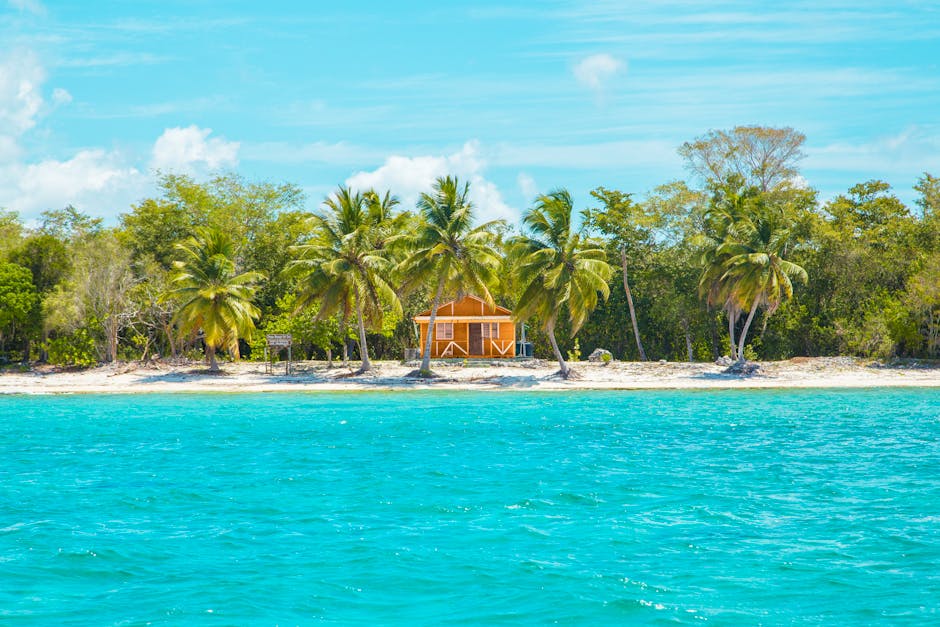Second Home Insurance: Top Companies Reviewed

Introduction
If you’re exploring options for second home insurance, understanding the details and choosing the right insurance provider is crucial. Owning a second home is a significant investment and comes with its own set of risks and responsibilities. At Schneider and Associates Insurance Agencies, we specialize in providing comprehensive and tailored insurance solutions for your second home. This ensures your property is well-protected even when you’re not there.
Why is Second Home Insurance Important?
Owning a second home is a dream for many, but it comes with unique risks. Here are the key reasons why second home insurance is crucial:
Higher Risk
Second homes face higher risks compared to primary residences. Insurance companies see them as more vulnerable due to several factors:
Longer Unoccupied Periods: When a home is empty for long stretches, small issues can escalate into major problems. A tiny leak can turn into extensive water damage if left unnoticed.
Increased Burglary Risk: Unoccupied homes are prime targets for burglars. According to the Insurance Information Institute, theft is a significant concern, contributing to 98.1% of homeowner claims in 2018.
Unoccupied Periods
Second homes are often vacant for extended periods, which increases the risk of undetected damage. Here are some common issues:
Frozen Pipes: During winter, pipes can freeze and burst, causing significant water damage.
Electrical Fires: Faulty wiring can lead to fires, which might go unnoticed until it’s too late.
Theft
Homes that aren’t occupied all the time are more attractive targets for theft. Burglars often look for signs that a property is unoccupied:
Accumulated Mail: Piles of mail or newspapers can signal that no one is home.
No Lights: A dark house at night is an easy target.
Damage
Without someone present to address issues promptly, minor problems can cause major damage:
Weather Damage: Storms can cause roof damage, which might not be noticed until it leads to leaks and interior damage.
Vandalism: Vacant homes are more susceptible to vandalism, which can result in costly repairs.
Case Study: Florida Beach House
Consider a Florida beach house. Due to its location, it’s at higher risk for hurricanes and flooding. A standard homeowners policy wouldn’t suffice. Instead, a tailored second home insurance policy would cover these specific risks, ensuring the property is protected even when it’s unoccupied.
Having the right insurance for your second home gives you peace of mind, knowing that your investment is safeguarded against unforeseen events.

Next, let’s explore the unique features and benefits of Schneider and Associates Insurance Agencies’ second home insurance offerings.
Why is Second Home Insurance Important?
Owning a second home is a dream for many, but it comes with unique risks. Here are the key reasons why second home insurance is crucial:
Higher Risk
Second homes face higher risks compared to primary residences. Insurance companies see them as more vulnerable due to several factors:
Longer Unoccupied Periods: When a home is empty for long stretches, small issues can escalate into major problems. A tiny leak can turn into extensive water damage if left unnoticed.
Increased Burglary Risk: Unoccupied homes are prime targets for burglars. According to the Insurance Information Institute, theft is a significant concern, contributing to 98.1% of homeowner claims in 2018.
Unoccupied Periods
Second homes are often vacant for extended periods, which increases the risk of undetected damage. Here are some common issues:
Frozen Pipes: During winter, pipes can freeze and burst, causing significant water damage.
Electrical Fires: Faulty wiring can lead to fires, which might go unnoticed until it’s too late.
Theft
Homes that aren’t occupied all the time are more attractive targets for theft. Burglars often look for signs that a property is unoccupied:
Accumulated Mail: Piles of mail or newspapers can signal that no one is home.
No Lights: A dark house at night is an easy target.
Damage
Without someone present to address issues promptly, minor problems can cause major damage:
Weather Damage: Storms can cause roof damage, which might not be noticed until it leads to leaks and interior damage.
Vandalism: Vacant homes are more susceptible to vandalism, which can result in costly repairs.
Case Study: Florida Beach House
Consider a Florida beach house. Due to its location, it’s at higher risk for hurricanes and flooding. A standard homeowners policy wouldn’t suffice. Instead, a tailored second home insurance policy would cover these specific risks, ensuring the property is protected even when it’s unoccupied.
Having the right insurance for your second home gives you peace of mind, knowing that your investment is safeguarded against unforeseen events.

Next, let’s dive into the top companies for second home insurance and what they offer.
Key Features to Look for in Second Home Insurance
When choosing second home insurance, it’s crucial to understand the key features that will best protect your investment. Here are the main features to consider:
Dwelling Coverage
Dwelling coverage is the foundation of any second home insurance policy. It protects the structure of your vacation home, including walls, roof, and any attached structures like a garage. This coverage is usually based on the replacement cost of your home, meaning it covers the cost to rebuild your home from the ground up if it’s destroyed by a named peril like fire or windstorm.
However, note that named perils policies only cover specific events listed in your policy. So, if your home is damaged by something not on that list, you’re out of luck. Always read your policy carefully and consider additional coverage for risks like earthquakes or floods.
Personal Property Coverage
Personal property coverage protects the belongings inside your second home. This includes furniture, electronics, and other personal items.
But here’s the catch: coverage is usually limited. For instance, your policy might only cover a portion of the total value of high-end electronics or jewelry. For these items, you might need separate policies or riders to ensure full protection.
Liability Protection
Liability protection is crucial if you have guests over. This coverage protects you if someone gets injured on your property and decides to sue. It covers guest injuries and the associated legal expenses.
In some cases, your primary residence’s liability insurance might extend to your second home. But it’s wise to double-check. You might also consider a personal umbrella policy for extra liability protection.
Additional Risks
Standard policies for second homes typically do not cover damage from floods or earthquakes, but special coverage may be available for common risks in your area. For example, if your secondary home is located in a coastal beach town, you may need windstorm insurance and flood insurance.
Additionally, if you rent out your second home, you might need landlord insurance or short-term rental coverage. Renting comes with additional risks, and a rental home needs its own coverage. Short-term rentals (rented for less than 30 days) may need extra coverage added to your second-home policy, while long-term rentals (rented for 30 days or more) may need a separate landlord or business-related policy.
Understanding these key features will help you choose the right second home insurance policy. Next, let’s dive into the factors that affect the cost of second home insurance and how you can manage these costs effectively.
Factors Affecting Second Home Insurance Costs
When insuring a second home, several factors can influence the cost of your policy. Understanding these factors can help you make informed decisions and potentially save money.
Location
Location is a major factor. Homes in areas prone to natural disasters like floods, wildfires, or hurricanes will have higher premiums. For instance:
Flood-prone areas: Homes near lakes, rivers, or oceans may require separate flood insurance policies. Flooding can cause extensive damage, and standard homeowners insurance usually doesn’t cover it.
Wildfire risk: Properties in remote or mountainous areas are more susceptible to wildfires, leading to higher insurance costs.
Storm surge: Beachfront homes face risks from hurricanes and storm surges, which can significantly raise premiums.
Usage
How you use your second home also affects your insurance needs and costs:
Vacation home: If the property is vacant for long periods, it’s at higher risk for theft and unnoticed damage, increasing insurance costs.
Rental home: Renting out your property, whether short-term or long-term, usually requires additional coverage. For instance, landlord insurance protects against tenant-caused damages and can replace lost income if the property is being repaired.
Age and Condition
Older properties usually cost more to insure. Insurers consider the likelihood of structural issues and outdated systems:
Older homes: May require more maintenance and are seen as higher risk, leading to higher premiums.
Newer homes: Typically better maintained and built to modern standards, often resulting in lower insurance costs.
Property Type
The type of property you own also impacts your insurance rates:
Single-family homes: These typically have higher premiums compared to condos or townhouses because they lack shared security features.
Condominiums: Often cheaper to insure because the homeowners association usually covers the building’s exterior, reducing your insurance needs.
Pools and hot tubs: While great for relaxation, these amenities increase liability risks and can drive up your insurance costs. Additional liability coverage is often recommended.
Bundling Discounts
One effective way to save on second home insurance is by bundling your policies. When you bundle your second home insurance with your primary residence policy under the same insurer, you may qualify for significant discounts. Bundling not only streamlines your insurance management but also makes it easier to keep track of your policies and payments.
Understanding these factors can help you better budget for your second home insurance and ensure you have the right coverage. Next, we’ll discuss frequently asked questions about second home insurance companies.
Frequently Asked Questions about Second Home Insurance Companies
Why is second home insurance so expensive?
Second home insurance is often more expensive due to higher risk factors. These homes are usually unoccupied for long periods, making them more susceptible to issues like leaks, fires, or vandalism going unnoticed. Additionally, the location risks play a significant role. For example, a beach house in Florida faces higher risks from hurricanes and flooding, which increases the insurance costs.
According to the Insurance Information Institute, these risks make second homes more likely to result in claims, driving up the cost of insurance.
Can you get mortgage insurance on a second home?
Yes, you can get mortgage insurance on a second home. However, you’ll need a separate policy for this property. Mortgage lenders often require property insurance as a condition for borrowing. This ensures that their investment is protected against damages from fire, wind, and other perils.
The National Association of Insurance Commissioners (NAIC) states that lenders usually have specific requirements for the type and amount of insurance coverage needed. It’s crucial to understand these requirements to ensure your second home is adequately insured.
Can you have two homeowners insurance policies on one house?
Having two homeowners insurance policies on the same house, also known as double insurance, is generally not recommended and can be legally complex. Most insurance companies discourage this practice because it can lead to disputes over which insurer is responsible for covering a claim.
Instead, it’s better to have a single, comprehensive policy that covers all your needs. If you’re considering extra coverage, look into options like a personal umbrella policy to extend your liability protection.
Understanding these frequently asked questions can help you make informed decisions about your second home insurance. Next, we’ll explore the key features to look for in second home insurance.
Conclusion
At Schneider and Associates Insurance Agencies, we understand that insuring a second home can be complex. That’s why we offer personalized solutions tailored to meet your specific needs. Whether your second home is a cozy cabin in the woods or a beachfront property, our team is dedicated to providing you with the right coverage.
Our approach is to offer tailored coverage that considers your unique situation. We take into account factors like the location, type of property, and how you use it. This ensures you get comprehensive protection without paying for unnecessary extras.
We pride ourselves on our local touch. Our agents are familiar with the specific risks and requirements of different areas, allowing us to give you expert advice and support. We’re here to help you navigate the complexities of insuring a second home, so you can enjoy your property with peace of mind.
Ready to protect your second home? Get a quote today and let Schneider and Associates Insurance Agencies take care of your insurance needs.
The post Second Home Insurance: Top Companies Reviewed appeared first on Schneider and Associates Insurance.


